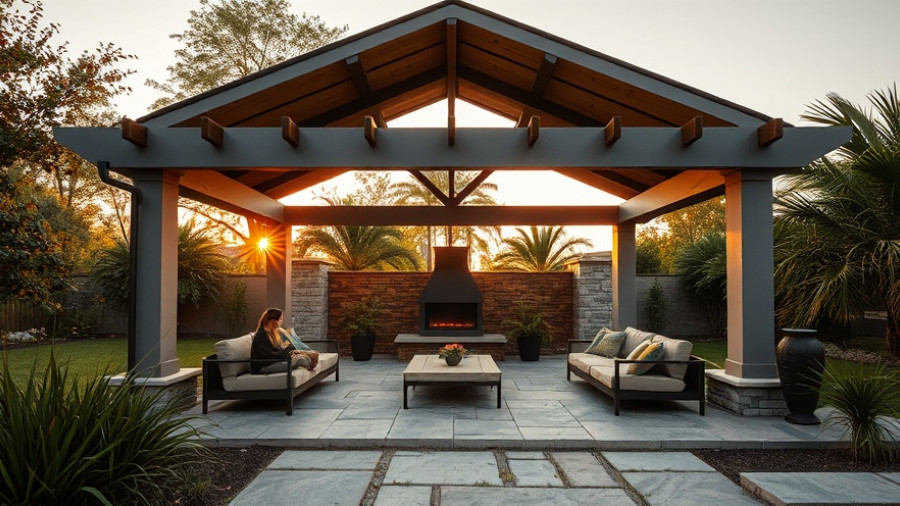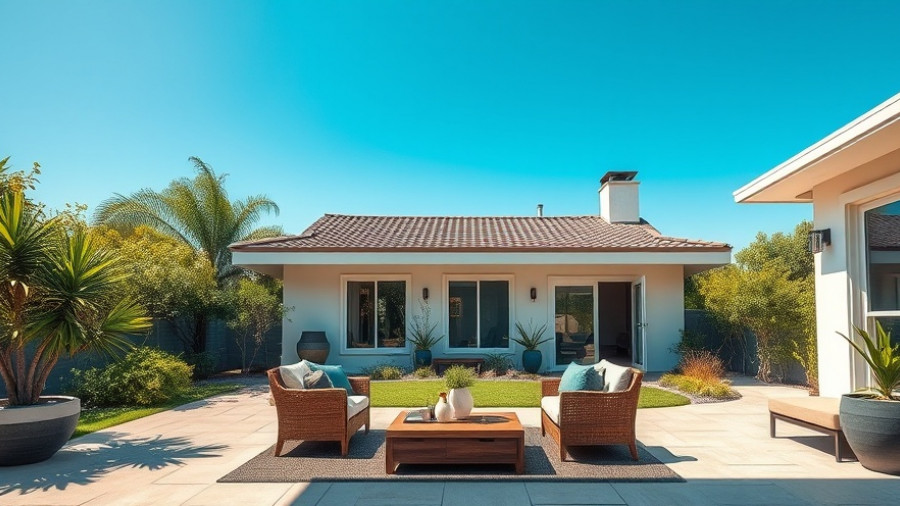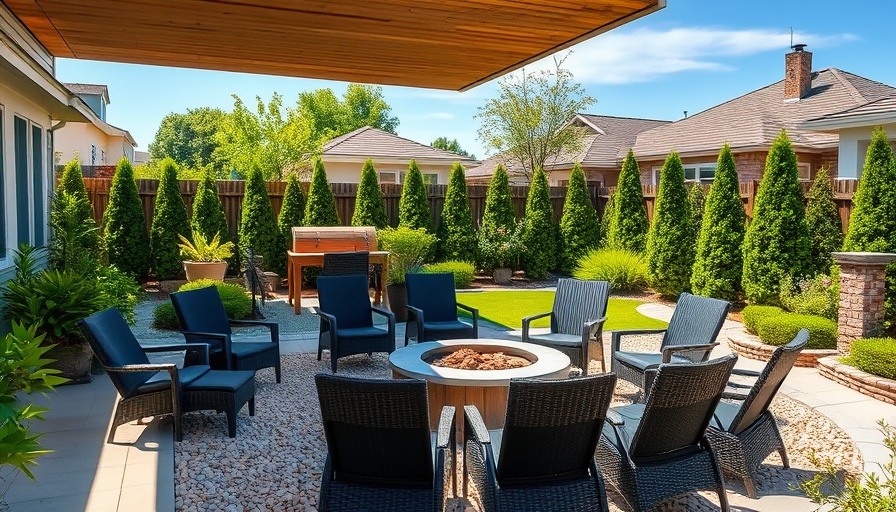
Transform Your Porch with Timeless Decor
As the seasons shift, many California homeowners find themselves wanting to refresh their outdoor spaces without completely overhauling their decor. With versatile design choices, your porch can remain inviting with minimal effort from autumn through winter. Here’s how to create a seamless transition between the two seasons, adding charm and warmth to your home’s entrance.
Embrace Nature with a Classic Wreath
A front porch isn’t complete without a wreath hanging from the door. The key to a wreath that spans both fall and winter is to start with a natural base. Wreaths made from branches, dried flowers, and greenery can work beautifully in both seasons. By simply swapping out small details like ribbons, you can tailor the look to match your current decor. For instance, use a warm champagne ribbon in the fall and switch to a deep burgundy or evergreen in winter.
Neutral Color Palettes: The Gift that Keeps Giving
Instead of indulging in the vibrant oranges of fall or the rich reds and greens of Christmas, consider a neutral color palette. Earthy tones intertwined with deep greens set a timeless foundation. Add accents in warm bronze, copper, or even gold to lend richness in autumn. This creates a cohesive look that evolves gracefully into winter, keeping your entrance looking fresh yet familiar.
Planters That Keep on Giving: Kale and Cabbage
Using kale and cabbage in your porch planters isn’t just practical; it’s a delightful design choice because these hardy plants bring color through both fall and winter. Pair purple cabbages along with seasonal flowers like red mums to create a vibrant display. As you transition into winter, adorn the planters with berries and pine for a festive touch. These arrangements not only look stunning but also require minimal maintenance.
Light Up the Season with Cozy Lighting
As the days grow shorter, ensure your porch glows with warmth by incorporating cozy lighting. Oversized lanterns filled with flameless candles or twinkle lights can create a magical ambiance that’s perfect for both settings. The soft light emanating from your porch invites guests year-round and can be an enchanting focal point in the evening.
Practical Insights and Tips for Seasonal Transition
When it comes to preparing your porch for the changing seasons, consider investing in durable decoration materials. Materials that withstand the elements not only save you money but can offer peace of mind knowing your decor will last. Substantial planters, weatherproof lights, and outdoor fabrics are all excellent choices for an enduring aesthetic.
Innovative DIY Options for Personal Touch
Creativity doesn't have to come at a high cost. Explore DIY options for your porch decor, from creating handmade wreaths to upcycling items for a fresh look. For instance, consider crafting a rustic sign that celebrates each season or a DIY lantern using mason jars. Such projects can build excitement as the seasons change and keep your porch uniquely reflective of your style.
Enjoying the Porch All Year Round
A well-decorated porch is more than just a front entryway; it's an extension of your living space. By implementing designs that transition smoothly between seasons, you can create a welcoming atmosphere that encourages outdoor enjoyment. Particularly in California’s mild climate, your porch can be a hub for social gatherings, relaxing afternoons, or a year-round holiday display.
Call to Action: Start Your Seasonal Transformation Today
With these simple but effective porch decor ideas, transform your outdoor space and let it reflect the beauty of each season. Whether preparing for holiday gatherings or simply enjoying a quiet evening under the stars, your enhanced porch awaits. Ready to create a welcoming entrance? Dive into the world of porch decor and let your creativity shine!
 Add Row
Add Row  Add
Add 




Write A Comment